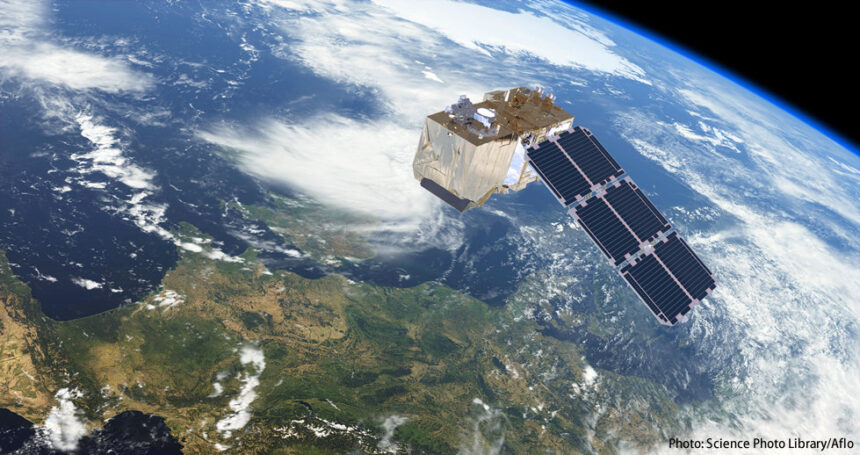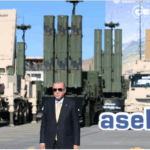Summary by Geopolist | Istanbul Center for Geopolitics:
The report “The Security of the Global Commons: Space and Climate Change” primarily focuses on the intersection of climate change, space, and military operations. It discusses the dual role of the military in mitigating and adapting to climate change impacts while maintaining operational readiness and security.
Key Points:
- Climate Change and Military Operations:
- Climate change poses significant challenges to military operations, including extreme weather conditions and rising sea levels that can damage bases and infrastructure.
- Militaries are required to minimize these impacts to maintain operational readiness.
- Utilizing Space Systems:
- Space systems are increasingly used by militaries for situational monitoring, improving security, and enhancing surveillance capabilities.
- These systems help in collecting data on greenhouse gas (GHG) emissions and assessing the impacts of climate change globally.
- Energy Efficiency and Unmanned Technologies:
- There is a push towards transforming military operations to be more energy-efficient and less reliant on fossil fuels.
- This includes the adoption of unmanned, AI-driven equipment to reduce the carbon footprint and enhance operational efficiency.
- Climate Change Mitigation and Adaptation:
- The document highlights the importance of using space-based technologies for both mitigating climate change impacts and adapting to them.
- These technologies include remote sensing for accurate GHG observations and creating digital twins of affected areas for better planning and response.
- Future of Human Settlement in Space:
- While large-scale human settlement in space is currently not realistic, efforts such as the US-led Artemis mission and China’s Chang’e program are paving the way for long-term space habitation.
- The security of space migration and resilience in space are becoming new missions for armed forces.
- Conclusion:
- The document concludes that humanity cannot escape the effects of climate change and emphasizes the need for proactive measures.
- Militaries are expected to play a crucial role in both adapting to climate change on Earth and ensuring the security of potential human migration to space.
The report suggests that the integration of advanced space systems and technologies is essential for the military to effectively address the challenges posed by climate change while maintaining global security.
Read the full report below.
Research Group on ‘Risks in New Domains’ FY2023-# 1
“Research Reports” are compiled by participants in research groups set up at The Japan Institute of International Affairs, and are designed to disseminate, in a timely fashion, the content of presentations made at research group meetings or analyses of current affairs. “Research Reports” represent their authors’ views.
Rising temperatures due to global warming are not only creating enormous damage from droughts, forest fires, and torrential rains, but are also causing serious consequences such as rising sea levels, melting polar ice caps, frequent typhoons and hurricanes, and loss of biodiversity. There is no doubt that the international community must urgently address the issues of preventing further global warming and curbing the intensification of extreme weather events for the survival of the human race. People living on this planet need to accurately assess the impact of ongoing climate change, hasten its mitigation, and smoothly adapt to it, rather than acting undecidedly by dismissing climate change as simply abnormal weather events.
Mitigation of Climate Change Impacts
Through the Conference of the Parties (COP), the highest decision-making body of the United Nations Framework Convention on Climate Change (UNFCCC), the world is trying to boldly and aggressively pursue policies to reduce emissions of carbon dioxide (CO2) and other greenhouse gases (GHG). However, since the latter half of the 20th century, global consumption of fossil fuels by military forces has been increasing significantly. Above all, air forces operating fighter aircraft and large transport aircraft as well as navies with fleets of large naval vessels are known to consume larger amounts of gasoline, diesel, and jet fuel than other military unitsi. There had been no agreement on international accountability or reporting requirements for military GHG emissions and monitoring and reducing military emissions had been a low priorityii until COP21, the conference held in Paris, France in 2015 where the Paris Agreement, a new post-2020 international framework on climate change, was adopted and military exemptions were eliminatediii. This also marked the beginning of specific mitigation efforts for the military as a major energy consumeriv. The US Navy is already examining aerial refueling using low-carbon refueling drones in light of the fact that large transport aircraft and aerial refueling aircraft are the largest sources of greenhouse gas emissions among operational aircraftv. This is one of the efforts being made to reduce GHG emissions by improving energy efficiency for aerial refueling while maintaining current equipment and systems.
Adapting to Climate Change Impacts
Militaries are highly non-substitutable force organizations due to the special nature of their missions, and they cannot be allowed to suspend or abandon their assigned missions even in operational environments that are deteriorating due to climate change. On the other hand, the effects of climate change are hitting troops and individual soldiers in the form of extreme weather, such as extremely high temperatures, torrential rains, and sandstorms, and causing them to lose their bases of operations when, for example, bases are submerged or airstrips and base facilities are damaged by rising sea levelsvi. Therefore, armed forces are required to always minimize the negative effects of climate change, maintain normal operational readiness, and fulfill their missions. This means that priority should be given to enhancing the resilience of armed forces to climate change to enable them to fulfill their missionsvii.
At the same time, small, lightweight, and energy-efficient drone technology is being actively introduced to promote the use of unmanned equipment, and attempts are underway to replace conventional fossil fuel-dependent equipment with autonomous, AI-driven equipmentviii. Although issues of practicality and cost-effectiveness mean that considerable time may be needed to deploy these advanced technologies, it is imperative for militaries to proactively introduce leading civilian technologies and not stop the flow of adaptation to the effects of climate change. It is also expected that militaries, which must continue to adapt to the rapid changes of the times, will transform the mindsets of their soldiers, innovate internally, and make smooth transitions to rational and advanced equipment/systems through proactive responses to climate change.
Addressing the Impacts of Climate Change through Space
Traditionally, mitigation and adaptation to the impacts of climate change have been considered different. This is because mitigation addresses the causes of climate change, primarily by reducing emissions of carbon dioxide as a greenhouse gas, while adaptation takes a different approach by focusing on how humans adapt to the consequences of irreversible climate change. In recent years, militaries have begun to respond efficiently and effectively by utilizing space systems to simultaneously reduce greenhouse gas emissions and strengthen climate resilience.
・Situational Monitoring from Space
Greenhouse gas concentrations are measured at many points around the globe to assess the impacts of climate change. Until now, direct measurements of collected atmospheric samples have been used to improve the accuracy of such observations, but it has not been easy to gain a grasp of the impacts on a global level. However, advances in remote sensing technology, which allows us to observe the shape and properties of objects from a distance, have achieved accuracy approaching that of direct measurements, and global-scale accurate GHG observations have become a reality. In addition, “visualization” of the Earth’s atmosphere by satellites has progressed and, when combined with other data sources such as satellite images and ground-based observations, the effects of climate change can be ascertained more precisely. As these collected data are digitized and accumulated, the creation of databases of entire areas being monitored is expected to advance rapidly. Ultimately, the creation of these databases will lead to the digital twinning of areas affected by climate change, i.e., the copying of reality onto virtual spaceix. This also entails creating an environment in which various trials and validations of mitigation and adaptation to climate change impacts can be conducted through “modeling and simulation”x of key issues in a digitally-twinned virtual space.
Militaries are currently utilizing space systems to improve their security and military alert/surveillance capabilities, and it is hoped that the information data monitored and collected from space will help paint an objective picture of the global environment as it is affected by climate change and contribute to vulnerability assessments of local communitiesxi. For example, the US military has conducted more than 40 disaster relief operations involving wildfires since 1987, and it continues to respond in a systematic manner, including having Air Force transport aircraft (C-130s) participate in firefighting efforts, while also beginning to consider the use of military satellites for warning and surveillance of large wildfiresxii. As militaries becomes increasingly involved in adapting to and mitigating the impacts of climate change, they will move toward using the observational data collected, aggregated, and digitized by space assets to efficiently and effectively carry out their dual-purpose mission of coping with the effects of climate change and undertaking vigilance and surveillance from space.
・Energy Efficiency through Space Substitution Functions
For militaries to simultaneously mitigate and adapt to the impacts of climate change, there is an urgent need to transform the energy of military functions, which are a major source of GHG emissions, and to enhance climate resilience through unmanned, labor-saving, smaller, lighter, and more economical operations and fuel switching in conjunction with the introduction of AI. In doing so, one of the most promising options would be to replace existing assets such as military aircraft and operational naval vessels with assets such as space system satellites in areas where the military’s GHG emissions are high, especially operational activities involving movement in the air and at sea. This would mean nothing less than establishing a global intelligence gathering, warning and surveillance system in space and eliminating airborne command and control systems using large aircraft while switching over to space-based systems. These alternatives would help to promote mitigation and adaptation to the effects of climate change while ensuring efficiency and safety by eliminating GHG-emitting assets while retaining the necessary military functions.
Conclusion
If we believe that the current climate change and extreme weather events are of human origin, then humanity should not be able to escape the negative effects of climate change for the foreseeable future as long as it resides on Earth. In fact, Elon Musk, the founder of SpaceX, is said to be working toward realizing a plan for human settlement on Mars. At present, large-scale human settlement in space is not realistic but, with the US-led Artemis mission and China’s Chang’e program targeting resource exploration and long-term stays on the Moon, human settlement in space is becoming less of a dream. On the other hand, it is essential that security efforts be made in parallel from the perspectives of crisis management and conflict resolution in the space domain for human migration to be realized in space with peace of mind. Militaries will be given responsibility for the security of human space migration while eliminating man-made threats from the battlefield that space would become. This suggests that strengthening civilian resilience in space has become one of the new missions assigned to the armed forces, and that the time is approaching when the armed forces should begin efforts to embody this response.
*Drafted on September 24, 2023
iv The Pentagon has been identified as “the largest single energy consuming organization in the United States.”(Office of the Assistant Secretary of Defense for Energy, Installations, and Environment, “Department of Defense Annual Energy Management and Resilience Report (AEMRR) Fiscal Year 2017,” July 2018, https://www.acq.osd.mil/eie/Downloads/IE/FY%202017%20AEMR.pdf. )
ix This refers to a technology that reproduces various data collected from the real world on a computer as if they were twins.
x The term here refers to a method to better understand complex systems and derive valuable solution ideas through modeling, validating, and understanding a variety of digitized problems.
By: Jun Nagashima (Board member, Japan Institute for Space and Security (JISS))







